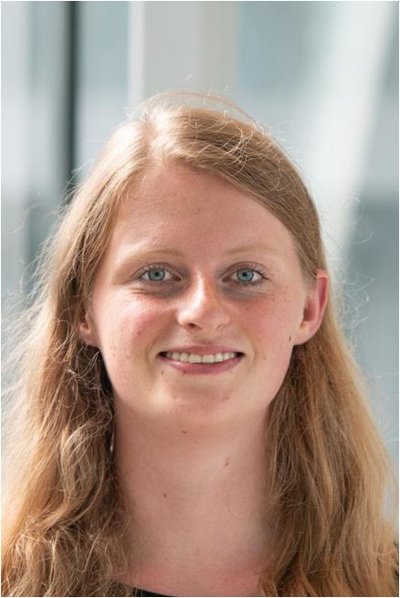Meniscus dynamics and selective evaporation in inkjet printing
The PhD defence of Maaike Rump will take place (partly) online and can be followed by a live stream.
Maaike Rump is a PhD student in the research group Physics of Fluids (PoF). Supervisors are prof.dr. D. Lohse and prof.dr. M. Versluis and co-supervisor is dr. T.J. Segers, all from the Faculty of Science & Technology (S&T).
 Whether an ink will result in reliable and stable droplet formation, depends on the actuation of the piezo and on the liquid properties of the ink. The ideal conditions can be described as a function of the actuation of the system and the properties of the ink. This thesis attempts to provide solutions to the challenges encountered when wanting to improve the speed, accuracy and quality of piezoacoustic inkjet printing. We propose a mechanism of bubble entrainment in an inkjet nozzle that results from the large meniscus deformations at high driving voltages. We describe the experimental observations and provide a proof of concept for the proposed mechanism using (inviscid and irrotational) numerical simulations. Furthermore, we aim to validate the proposed mechanism by utilising synchrotron experiments and combining these results with (viscous and rotational) numerical simulations. The investigation on meniscus deformations is continued by studying lower driving voltages, where we investigate the different oscillating modes of the meniscus and attempt to predict the required driving frequency to trigger the different observed modes.
Whether an ink will result in reliable and stable droplet formation, depends on the actuation of the piezo and on the liquid properties of the ink. The ideal conditions can be described as a function of the actuation of the system and the properties of the ink. This thesis attempts to provide solutions to the challenges encountered when wanting to improve the speed, accuracy and quality of piezoacoustic inkjet printing. We propose a mechanism of bubble entrainment in an inkjet nozzle that results from the large meniscus deformations at high driving voltages. We describe the experimental observations and provide a proof of concept for the proposed mechanism using (inviscid and irrotational) numerical simulations. Furthermore, we aim to validate the proposed mechanism by utilising synchrotron experiments and combining these results with (viscous and rotational) numerical simulations. The investigation on meniscus deformations is continued by studying lower driving voltages, where we investigate the different oscillating modes of the meniscus and attempt to predict the required driving frequency to trigger the different observed modes.
In the second part of the thesis, we focus on the multi-component properties of the ink inside the printhead. We describe a method to measure changes in the concentration inside the nozzle during the evaporation of a mixture where one liquid has a higher evaporation rate than the other. We quantify the concentration changes by using the piezo element to measure the corresponding change of the acoustics inside the printhead. Using an in-house developed analytical model, which is further validated by numerical simulations, these measurements provide information on the liquid composition in the nozzle. Finally, we study the case when the liquid mixture is a water-surfactant solution, where we investigate how the presence of surfactant influences droplet formation and the resulting droplet velocity and volume during the different timescales involved in inkjet printing.





